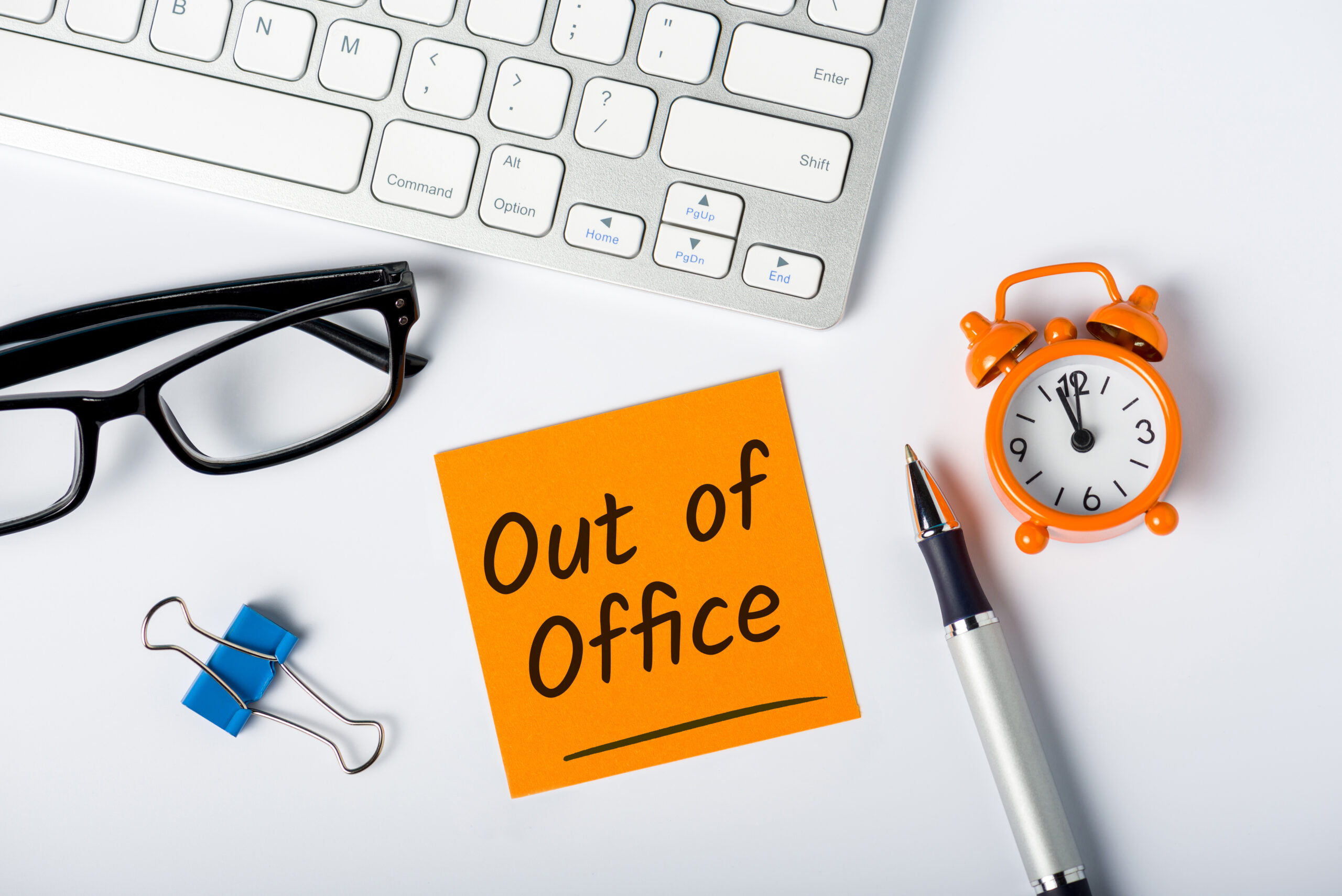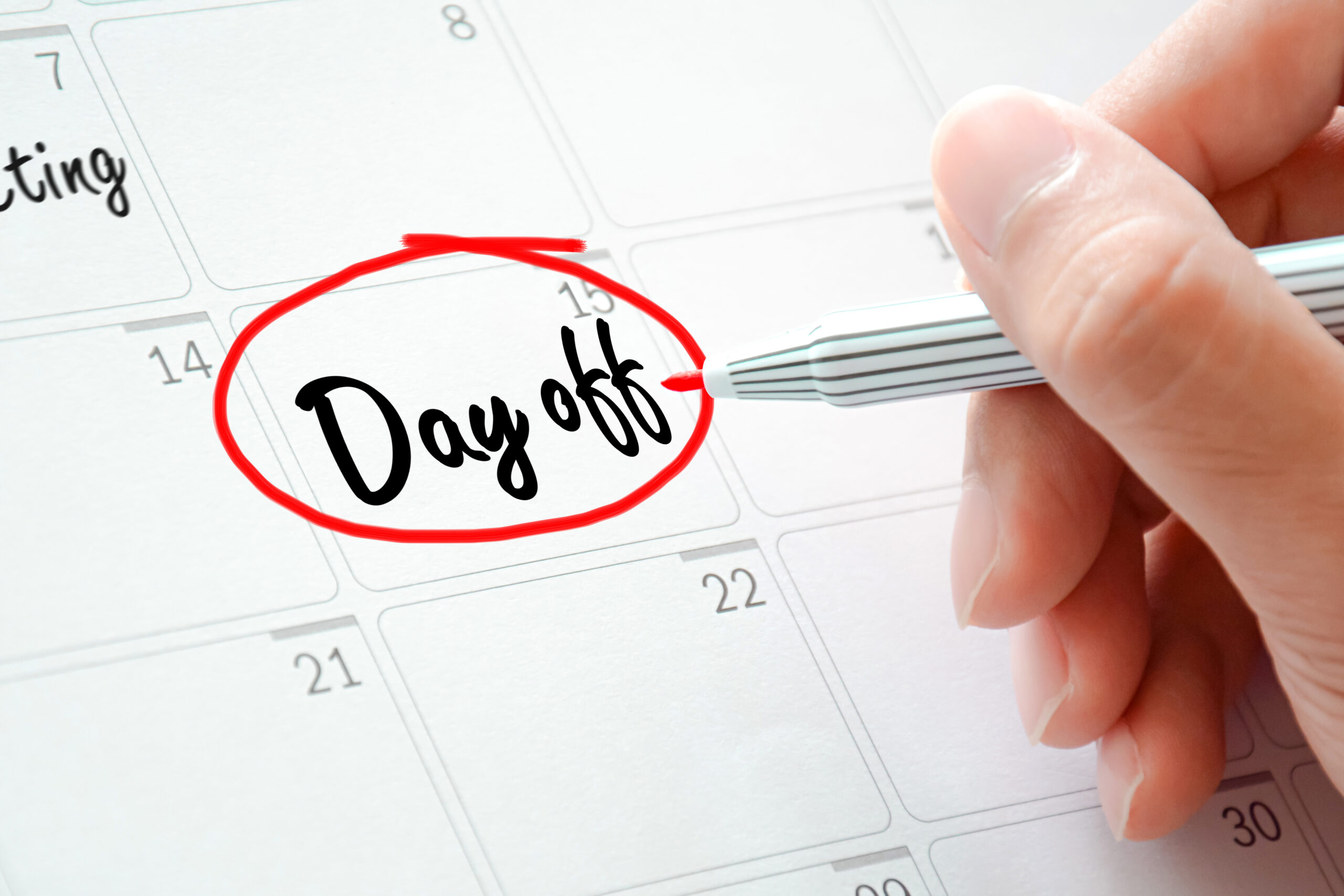
When you work in fundraising, the last thing you may think you can do is take time off from work.
Fundraising has a round-the-clock urgency, the feeling that you always need to be planning the next campaign, sending a report to a funder, or whipping up social media graphics.
It’s true, there is a lot to do.
And one thing you absolutely, positively MUST DO if you want to stay at the top of your game is take time off.
That’s right! To succeed at a fast-paced job that requires hard work and focus … you have to regularly take time off from work.
Taking a break from work gives your brain the chance to reset and recharge, and this is essential to avoiding burnout and staying productive all year long.
The key to being able to take time off without adding to your stress is to plan it out.
Map out your days off for the year, knowing you can make changes but standing firm in your commitment to take time off.
If you have a fixed number of days off, save a few days for last-minute opportunities to get away. But mark the rest of your days on your calendar at the beginning of the year, just like you mark your campaigns and events.
Then you always know when your next break is, which is super helpful to the tired part of you that is looking forward to the next vacation.
Let’s take a deeper look at how to effectively take time off when you’re the leader of a nonprofit.
How Many Days Should a Fundraiser Take Off?
The number of days you take off is up to you and your supervisor, whether that’s the Board or your Executive Director.
If you are your own boss, with a Board that generally approves whatever you recommend, negotiate with yourself something fair and reasonable, something that will allow you the time you need to recharge. Put it in writing so there is no ambiguity or confusion.
Start with the nationally-recognized holidays. Here in the U.S., there are 12 federal holidays: New Year’s Day, Martin Luther King, Jr.’s Birthday, Washington’s Birthday, Memorial Day, Juneteenth National Independence Day, Independence Day, Labor Day, Columbus Day (often celebrated as Indigenous Peoples Day), Veterans Day, Thanksgiving Day, and Christmas Day.
If you can, take them all off.
Many businesses will be closed, including the bank and the post office, and no one will be surprised to get an out-of-office email from you on a federal holiday.
Next, consider vacation days. The average American worker gets 10 days of paid vacation. However, that is not a lot when spread across the year, and many employers are extending the number of paid vacation days to 15 or 20, even for employees who have only been on the job for a short time.
Sometimes, holidays fall in such a way that you can add a couple of vacation days and get an even longer vacation, so watch for that opportunity.
Personally, if I have 2 weeks off, I like to take one of them in a clump so that I get 9 days off (5 work days plus the weekends on either side) then spread the rest around for lots of 3-day weekends or extra time at the holidays.
Some employers also allow for a few sick days during the year. Increasingly, organizations are providing more days off and lumping them all together as Paid Time Off or PTO, rather than distinguishing between sick time and vacation time.
Another trend is unlimited paid time off. You just take time off when you need it. Really!
However, this can be a tricky issue disguised as a good thing. Yes, it gives people time to refresh and recharge based on their individual needs. But it doesn’t set an expectation of how much time off is normal, so some employees might feel uncomfortable asking for any time off, like they are disappointing their employer or undermining their reputation as a hard worker.
If you have unlimited time off, commit to taking at least 15 days, in addition to federal holidays.
When Should Fundraisers Take Time Off?
 It’s best to be strategic about when you schedule your time off.
It’s best to be strategic about when you schedule your time off.
Obviously, you don’t want to take off in the weeks leading up to your biggest fundraiser of the year.
It’s also not a good idea to wait until the end of the year to cram in a lot of unused PTO. There’s a lot to do at year-end and you can get caught in the year-end crunch with appeals and the usual flood of gifts that need to be processed and acknowledged.
You either won’t have time to take all the time you earned, or you will be taking time off when urgent tasks are piling up. And that just piles on more stress.
Avoid this crunch by spreading your days out throughout the year.
A great time to plan your time off from work is when you have finished your fundraising plan.
It takes time and thought to draft a plan. Once you have the plan in place, you have a road map to get you to your goal by the end of the year. You know exactly what you need to do every week and every month.
So, now that you know what you are going to do to bring in the money you need to fund your mission, it’s time to plan some time off.
- Start with the schedules of other family members. If you have kids, look up their school breaks. If you have a partner, talk to them about the best time to take time off together.
- Also consider taking some time when everyone else is at work and school, so you can enjoy some time to yourself or a trip with friends.
- If you take a summer vacation every year, mark that off. Go ahead and book the trip if you can. That way it is set in stone.
- Once you have considered your needs and your family’s needs, consult your fundraising plan for your organization’s needs. Certain times are not going to work for time off, such as the weeks leading up to a signature event or a major campaign.Look for some time after these big, exhausting pushes. Give yourself a week after your signature event to wrap things up, and then think about taking some time off the next week.
- Is summer a slower time at your organization? It is for many organizations. But you don’t want to burn all your time off during the summer. Can you take a few days off in the fall to enjoy the beautiful weather? How about the last week in September or the first week in October?
- Another strategy some organizations are using is shutting down the entire organization during slower times so everyone can take time off from work. This time off is paid, but it does not count against PTO. Some organizations close for a week during the summer and the week between Christmas and New Years Day.
The latter option may be challenging for a fundraiser, as there are some key communications that go out during that week. But, remember, emails and texts can be scheduled ahead of time! If you plan on making donor calls during that week, how about asking your Board chair to make those calls for you?
If you are only comfortable taking time off when your work demands are light, you need to adjust your mindset. The workload will rarely be light in fundraising.
If you only take time off when you are sure you won’t be needed, you may never get a break!
Fundraising is a high-turnover field and burnout is a key reason. Play the long game, and budget time off so you can stay in the field for a long time, raise a lot of money, and make a significant contribution in your community.
How to Plan for Time Off

Taking time off is tough, especially if you’re a founder or in charge.
You may think that the organization can’t run if you’re not there, and there may be some truth to that.
However, you absolutely CAN figure it out so that you get some time off. You just have to prepare.
My friend who worked in insurance as her first professional job was taught to leave her desk every day as if it were her last day at work. Her boss told her that her replacement should be able to take over where she left off without having to wonder where things were or what needed to be done. All of that should be spelled out.
Twenty years later, this friend is the most organized person I know!
While it’s extreme to expect employees to sign off every day with that level of organization, you should aim to leave for vacation with a clean desk and a to-do list waiting for you when you get back.
Here are the steps you can take to be able to confidently walk away from your job and turn your full attention to your vacation:
Now, you’re ready for your vacation to start!
Okay, I’m taking time off work. What now?

Fundraising can be a hard job to leave behind.
You may feel like you’re always supposed to be on, always talking up your organization, always looking for opportunities.
Spend your time off as just a regular person, not a fundraiser or a nonprofit founder. Be a person reading a book, knitting a scarf, or binge-watching Cheer. Be a person doing a crossword puzzle, baking a lemon loaf, taking your dogs to the park, or poking around an antique store. Be a person setting up a bird feeder and photographing the birds that stop by or taking a long bike ride.
Do you even know this person? You may need to get reacquainted with your non-fundraiser self.
You may need to get used to reading books for pleasure. Try a true crime podcast or a mystery novel in audiobook form.
You may have trouble keeping your mind off work. When you talk to your partner, your friend, or even your child, you may be tempted to talk about work. Think about other things to talk about.
Play music you love but that you haven’t listened to in ages. Go on a nature walk. Call a friend you haven’t spoken with in a while. Meet friends for lunch or coffee. Sleep a lot.
Winding down can be hard when you’re out of practice. Just sitting still and doing nothing can be just the right thing to do as your brain adjusts to not working. Personally, it takes me a day or so to slow down long enough to enjoy sitting still doing nothing.
If you are on a vacation in an exciting, new place, resist the urge to be the leader. Don’t spend the trip organizing every day’s activities and making sure everyone else has a good time.
That is not unwinding. That is work, just in a different context.
Let your traveling companions plan the activities. Go on a guided tour, the kind where you just follow someone around and listen. Spend a day at the hotel pool, flipping through magazines while everyone else does what they want to do.
Don’t worry about productivity, making lists, or sticking to a schedule. Remind yourself that you are on vacation. If you are in a place with a lot of sightseeing opportunities, don’t feel like you have to see and do everything. Remind yourself that you can come back someday.
Re-Entering Real Life
Your vacation is over, and it’s time to return to your life as a fundraiser.
Don’t spend your last days on vacation obsessing about going back to work. You have a to-do list, remember? Enjoy your vacation right up until your alarm goes off on your first day back.
Return to work, and consult your list for the tasks that need to be done. Embrace your routine. Get back to your mid-morning coffee break or your afternoon Instagram binge.
Consider adding something restorative to your routine. Can you take a quick walk after lunch?
If you have an overwhelming number of emails and voicemails, don’t feel like you have to respond to every one of them on your first day back. After you have settled in, touch base with your colleagues, volunteers, and Board members. Then, get back to your list.
Some people use the dread of returning as an excuse not to take time off from work. Make returning to work just a normal thing you do, just like taking time off is normal.
The Bottom Line

We all need time to rest and recharge, and that includes fundraisers, nonprofit leaders, and founders. Even if your organization is new. Even if there are an overwhelming number of people and animals who need your services. Even if you set a high fundraising goal.
Commit to taking time off from work. Do it for the sake of your mental health and wellbeing. Also, do it for the sake of productivity. By taking time to recharge, you will avoid burnout and be more productive.
You will also set a great example for your colleagues when you take time off from work. You will build a healthy, happier workplace. And, together, you will all work hard and change more lives. That’s what it’s all about!






VIP Reminder. Thanks Sandy,
as always you are “Spot-On”